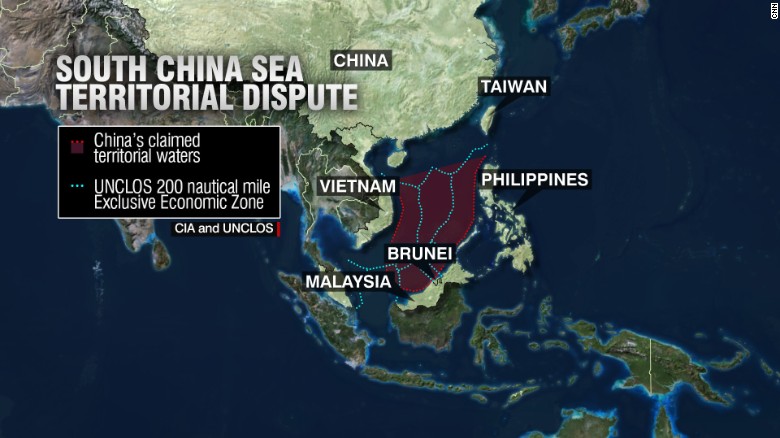Saber Rattling Continues at China’s “Great Wall of Sand”
Ever since the late 70s, China has been on the rise. The marketization of China economy has caused it to undergo rapid economic growth. Despite its recent economic slowdown, China’s international and expansionist ambitions are going just as strong, which is reflected through its recent actions in the southwest Pacific.
In 2014, China began a land reclamation project in the South China Sea dubbed the “Great Wall of Sand” by Harry Harris, Commander of the U.S. Pacific fleet at the time. This project mainly consists of Chinese naval vessels dredging sand onto preexisting coral reefs to create artificial islands. Seven of these man-made islands exist today, and the largest of them features developments like barracks for housing soldiers, a harbor for naval ships, radar stations, concrete plants and an airstrip large enough for any Chinese military aircraft.
The South China Sea is a rich fishing ground included in the paths of many Oceanic trade routes that might even have the potential for oil production. But China’s developments on these islands serve more to fortify its territorial claims in this region than exploit natural resources. Defense analyst group IHS Jane calls the project a “methodical, well-planned campaign to create a chain of air and sea-capable fortresses.”
It should come as no surprise that many of the nations who also have claims in the South China Sea were concerned with their neighbor’s new expansionist tendencies. The Philippines even went as far as to challenge the legality of China’s actions by presenting their case to the United Nations. The U.N. ruled in favor of the Philippines, an event that was promptly ignored by China.
When President Xi Jinping visited President Obama at the White House in September, China’s expansions were a point of debate between the two leaders. President Obama expressed his concerns about “land reclamation, construction and the militarization of disputed areas, which makes it harder for countries in the region to resolve disagreements peacefully.” Since then, China has shown no signs of stopping or even slowing their island building operations.
The international community has been disputing over what the best course of action would be to deter further Chinese development. Some groups are afraid that the resulting friction of any international intervention might cause an all-out war with China while other groups claim that a policy of appeasement would only encourage further Chinese transgressions.
On the 26th of last month, the Obama Administration decided on a course of action. The guided missile destroyer, USS Lassen, was ordered to pass within 12 nautical miles of the Subi and Mischief reefs, two of the artificial islands under Chinese control. Under United Nations Convention of the Laws of the Sea (UNCLOS), a nation controls waters extending 12 nautical miles from controlled land.
However, reefs and other sea features do not count as land for the purpose of UNCLOS law, so the USS Lassen’s passage through what the Chinese call “territorial waters” was technically legal under international maritime laws. The Lassen’s passage was meant to demonstrate how China’s claims to those waters are illegal and emphasize that the U.S. will not embrace a policy of appeasement in the face of illegal expansion.
China was incensed at the Lassen’s “deliberate provocation” and summoned the U.S. ambassador to tell him that America must quit “threatening Chinese sovereignty and security interests.” Now the two world powers stand suspiciously eyeing each other: the Chinese, unapologetic and continuing to build, and the U.S. torn between provocation and preventing war.







